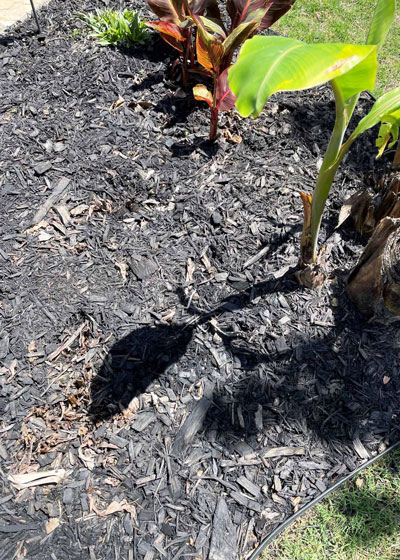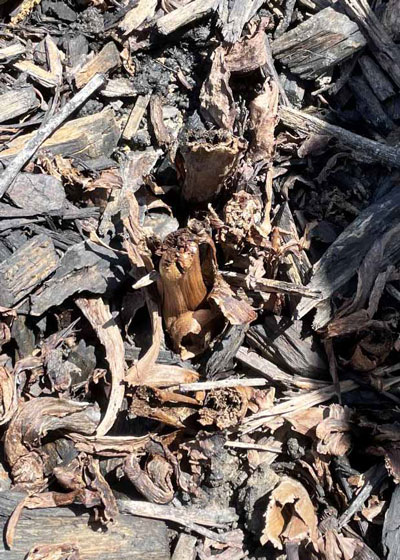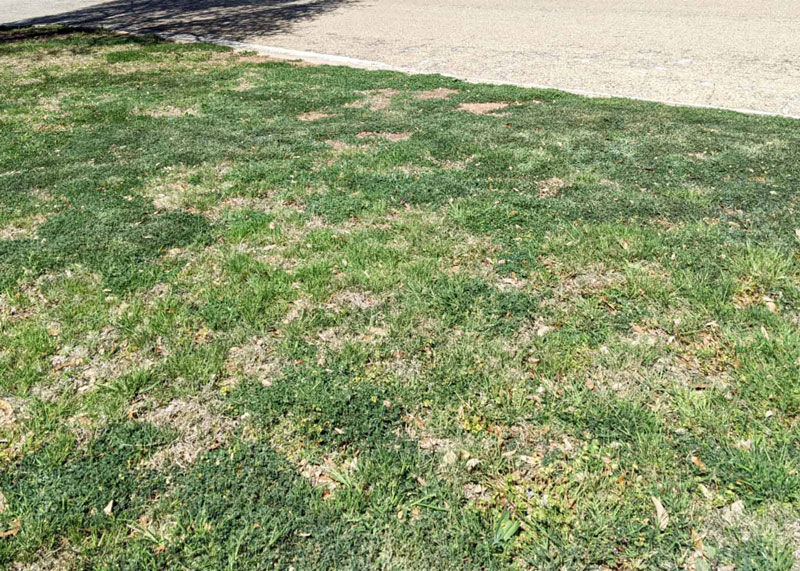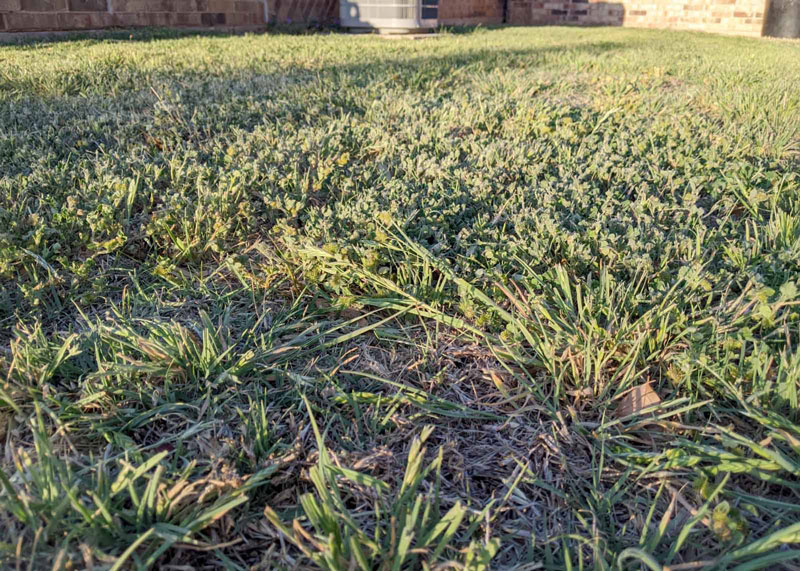Q&A – Ask Neil: April 27, 2023
(Please read these instructions carefully.)
Before you post your question, please look at recent issues to see if someone else has already asked it. You might find your answer there.
How to submit your question…
• Click the link provided below to post your question. After you submit your question, a new window will pop up giving you the address to which you can e-mail a photo to accompany your question. Clear, medium-resolution photos. (Try to avoid low-res thumbnail photos, please, in case I have to zoom in to see things.)
• Click here to post your question.
• Please only post your question one time.
• One question per reader, please.
• Please use this only for posting questions – not for standard emails.
• Watch for your answer in the following week’s e-gardens.
• I choose those of greatest general interest. For example, plant IDs seldom make the cut.
• I must have your first name or initials.
• I must have your city or county. (Texas is a very large state.)
QUESTION 1
WHAT CAN I DO IF I KILL LARGE PATCHES OF BUR CLOVER AND HAVE BARE SPOTS LEFT BEHIND?
Question: My yard is blanketed with bur clover. I started to apply pre-emergent and begin a spray program, but I feared the bare spaces would be too unsightly when the weed died. I can’t afford to replant the big areas. Do you have any suggestions? Laura B., Abilene.
Answer: You need to get rid of the bur clover anyway, so I would apply a broadleafed weedkiller (containing 2,4-D) according to label directions soon. It will kill the clover and any other non-grassy weeds within a couple of weeks. Once the bur clover is gone, you’ll be able to assess how much common bermudagrass you have in your lawn. Usually there will be plenty to cover quickly. Apply ammonium sulfate (21-0-0) in late May and follow it up with a deep watering. Mow every 4 or 5 days at 1-1/2 inch to encourage low, dense growth. My bet is that you will have solid bermuda turf by mid-summer without having to go to any other heroics. Ammonium sulfate is definitely not a good fertilizer for repeated use on turfgrass. It produces rapid growth, but nothing sustained. I could compromise on one more application in late June or early July if you keep mowing and watering to keep the lawn low and dense, but once the lawn is solid, switch over to a high-quality lawn food with one-third or more of its nitrogen in slow-release form. I’ve done what I’m describing and it’s amazing how quickly a lawn can be restored. The only time this isn’t appropriate is when a lawn is bumpy and uneven. In that case you need to rototill and start with new sod or seed.
QUESTION 2
HOW LONG DOES IT TAKE CANNAS TO SPROUT?
Question: I bought three canna roots last year. They grew great, but this spring, only one has come back. How long should I wait before transplanting the survivors to the spaces where the others were? Michael F., Fort Worth.


Answer: The two plants probably froze in the Christmas cold spell. It killed a lot of plants that normally would have been safe. As for transplanting, you can do so late this fall or very early next spring (prior to new growth emerging. Don’t attempt it now. It would set the plants back badly.
QUESTION 3
WHERE CAN I FIND A ‘ROYAL GOLD’ ROSE?
Question: My wife would like a Royal Gold rose by our back fence, but I cannot find a place to buy one. Can you help? Mike P., New Braunfels.
Answer: I did a bit of Web searching for you. Here are some links that might be of interest.
As to its history: https://www.helpmefind.com/rose/l.php?l=2.5531.0
A wholesale grower who might have shipped to local retailers:
https://www.weeksroses.com/product/royal-gold/roses
And, three sources that ship, although they do look a bit pricey:
https://www.naturehills.com/rose-royal-gold-climbing-rose
Looks like these folks grow it but are currently out:
https://www.soonerplantfarm.com/plant/rose-royal-gold-climbing
https://shop.franksnurseryandcrafts.com/product/royal-gold-climbing-rose/
It’s rather late in the rose sales season. That’s working against you, as is the Rose Rosette Virus issue that has cropped up in parts of Texas. I hope I have helped, though.
QUESTION 4
HOW CAN I KEEP CRAPE MYRTLES FROM COMING BACK FROM THEIR ROOTS?
Question: Unfortunately, I feel like I have no choice but to remove three large crape myrtles that were planted too close to the house (less than 6 feet from it). What can I do to prevent their sprouting up again? Cory D., Little Elm.
Answer: You might consider moving the plants to a place that has more room. That would be something you’d have to wait until winter to do, though, so I’d better answer your question directly. Cut the main stalks to within an inch of the soil line. Drill holes the size of your little finger into the trunks. Blow or vacuum the sawdust out of the holes, then fill them with broadleafed weedkiller containing 2,4-D at full strength. Let it soak into the wood of the stump, then fill them again. That should be adequate for keeping the plants from sending new sprouts up all over your yard.
QUESTION 5
IS IT SAFE TO REPLANT KNOCKOUT ROSES AFTER 6-7 YEARS?
Question: I lost Knockout roses to Rose Rosette Virus 6-7 years ago. Is it safe to replant roses there again now? Martha, Tarrant Co.
Answer: The rose rosette virus won’t be active in the soil. In fact, you could have replanted almost immediately as far as the soil is concerned. The main issue is that the virus is probably still in your neighborhood, so it’s just a matter of time before your new plants become infected, too. If you’re willing to accept that risk, go for it.
QUESTION 6
HOW CAN WE SALVAGE SOME LARGE PRIVACY SHRUBS, OR MUST WE REPLACE THEM?
Question: We have some large privacy shrubs that are not doing well. They have thinned out and died over the past couple of years. Would you recommend planting more into the dead areas? Rob W., Southlake.
Answer: They look like they might be variegated privet. If so, they may have frozen in the two record cold spells we’ve had in the past couple of winters. You could try removing the dead plant(s) entirely and doing a major pruning on the remaining plant(s). I’d probably cut them back by half or more. Actually, I’d remove them and replace them with the same kind of holly you have on the right side. Hollies are so ultra-dependable that they are my go-to screening plants for sun or shade. I can’t see which holly this is. Take a sample (6-inch twig) to the nursery with you for identification. They’ll have many hollies in several sizes. Nellie R. Stevens (to 12-16 ft.) and Willowleaf (to 10-12 ft.) hollies are the best options.
QUESTION 7
CAN I TRANSPLANT A SMALL BOIS D’ARC TREE TO COLORADO SPRINGS?
Question: Would a 3-ft. tall bois d’arc tree survive at my daughter’s house in Colorado Springs? It goes below zero there occasionally and stays below freezing for a week at a time. Jack K., Lamar County.
Answer: Bois d’arcs (also known as “hedge apples” and “mock oranges”) are winter hardy to much colder temperatures than that. Are you certain that she wants one, what with its thorns and fruit? You’ll also want to be certain of any import quarantine laws governing transport of plants and soil from Texas into Colorado. I’m not aware of any, but there could be insects or diseases that could be carried. Check with each state’s Department of Agriculture. I would very much suggest moving a tree in a container. Find a suitable very small seedling now and transplant it into a 1-gal. pot. Let it grow the balance of this year and it should be ready for the move by this time next year.
QUESTION 8
I HAVE SPOTS ON MY TREE BARK (BALD CYPRESS AND PIN OAK) THAT LOOK LIKE INSECT DAMAGE.
Question: I have spots on the bark of my bald cypress and pin oak trees that look like insect damage. What caused it, and how can I control it? Tracy S., Rockwall.

Answer: To be candid, I don’t see anything out of the ordinary on the small branch of your bald cypress tree. One twig might have been stripped away by hail or by someone’s brushing against it a year or two ago, but it’s really no big deal. I see no need to treat anything from the one photo you attached.




